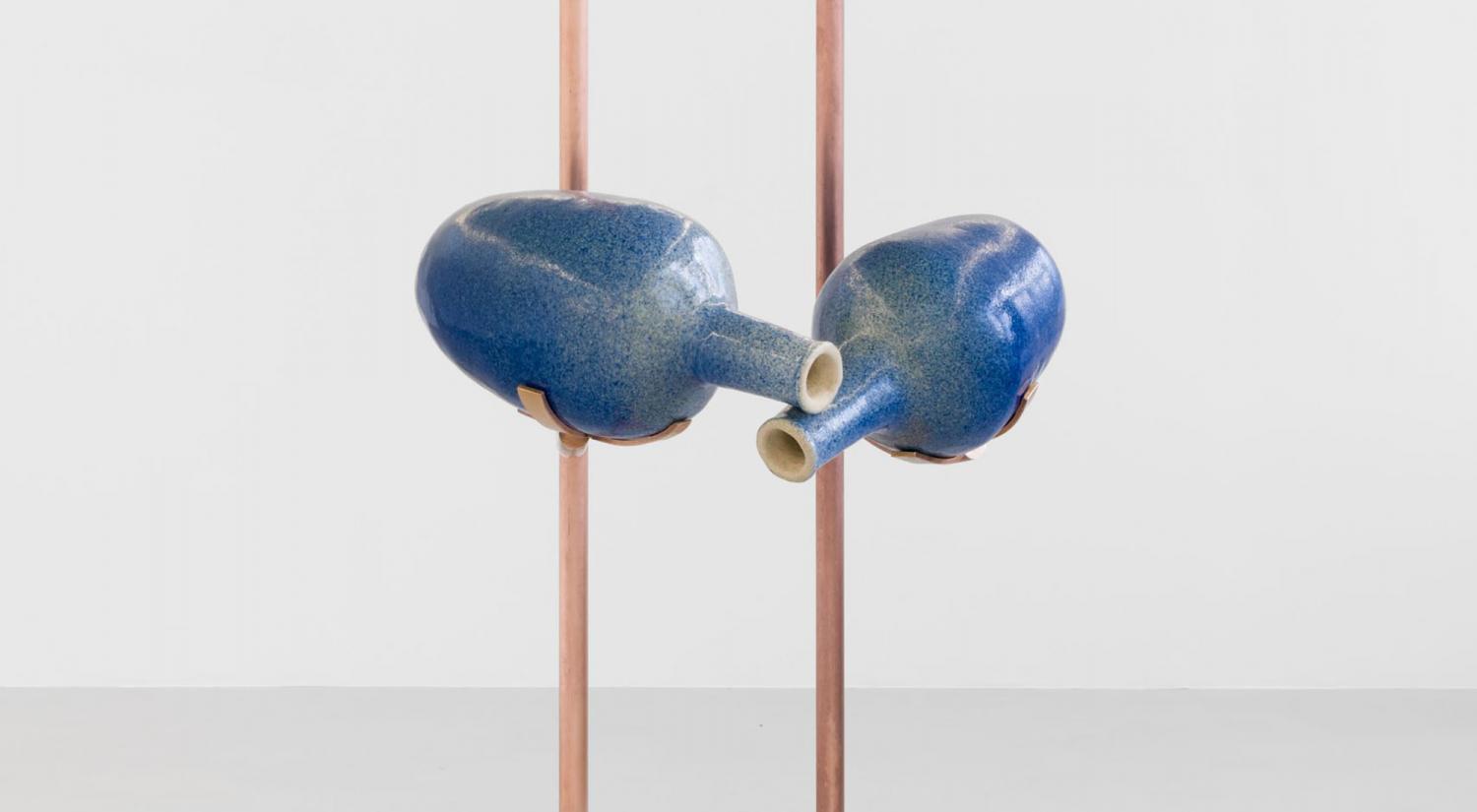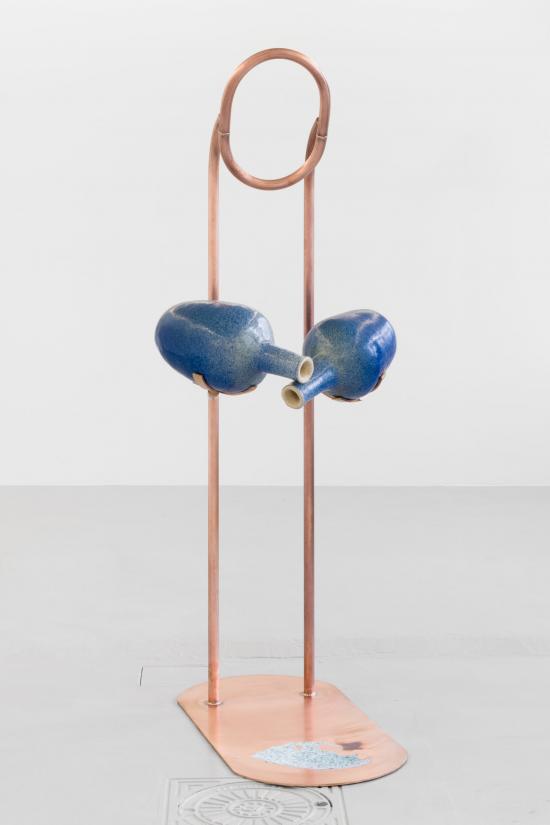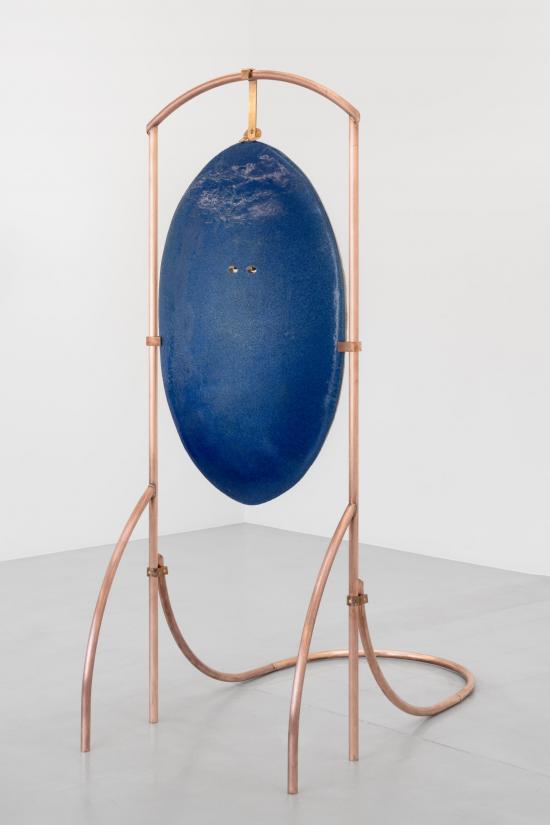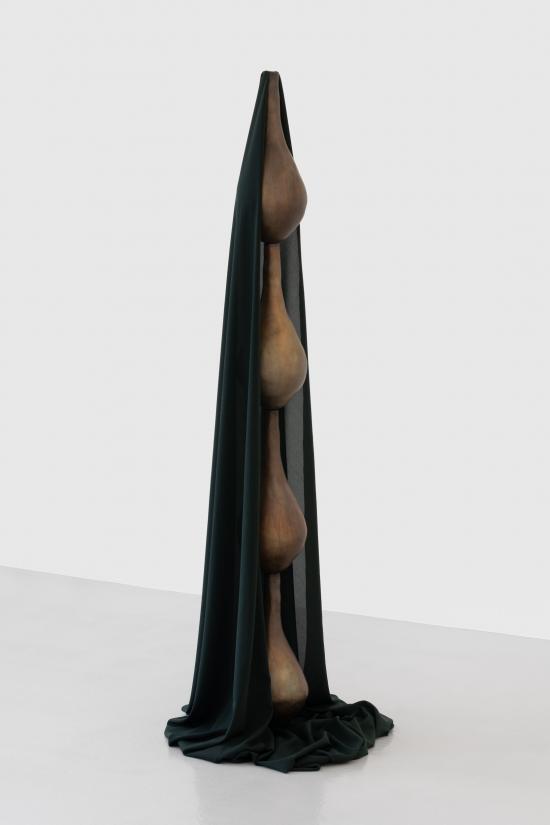The three sculptures Vessel, Byblis and Golem take their point of departure in the myth of Daphne, who is transformed from a human being to a plant. Daphne is fleeing from Apollo, who, mad with desire, chases her through the forest. In a last resort, Daphne asks the gods for help to escape her body, and in an instant, she is transformed into a bay tree. Christine Overvad Hansen’s work tells a similar story of the transformative potential of materials.
Elusive human features
Overvad Hansen’s three beautiful sculptures are enigmatic in character. They defy easy decoding and seem at once familiar and alien. Depending on the viewing angle, they seem to be on the verge of taking human form. Thus, we glimpse the outline of two eyes, a pair of hands or a head. However, these human features are only present as fragments or remnants. With this quality, Overvad Hansen’s sculptures pique our imagination and curiosity. Like Apollo, who throws his arms around the tree and senses Daphne’s heartbeat underneath the bark, we cannot help but wonder what else might lurk inside the forms.
Transformation themes
The titles of the three sculptures offer hints, with their references to mythological figures. Byblis’s refined and slender bronze construction carries two large blue stoneware jugs. The viewer is reminded of the mythological character Byblis, who sobs inconsolably because she has fallen in love with her twin brother, who is rejecting her advances. According to legend, she is transformed into a fountain. Similarly, Golem’s blue medallion-shaped body, mounted in an elegant bronze rack and floating above the ground, references the mute clay creature from Jewish folklore. As a title, Vessel stands out from the other two. Is this a forgotten mythological figure, or does the title refer to the English term for a hollow container? Either way, it connects with the artist’s mystifying universe. In Vessel she contrasts gravity and lightness as she stacks calabash-shaped vessels on top of one another against a dark cloth background. Thus, the three sculptures may be seen as more or less concrete abstractions. A transformation from soft moulded forms to bronze and stoneware.
About Christine Overvad Hansen
Christine Overvad Hansen (b. 1988) graduated from the Royal Danish Academy of Fine Arts in 2016. Even before her graduation she exhibited at Horsens Art Museum, and in 2016 she received the museum’s award for young promising artists. She has exhibited both in Denmark and abroad, including at Den Frie Centre of Contemporary Art, Kunsthal Aarhus, Parallel Vienna and Kuenstlerhaus Dortmund. She works with sculpture in an expanded field in a practice that ranges from large sculptural installations to performance art.






